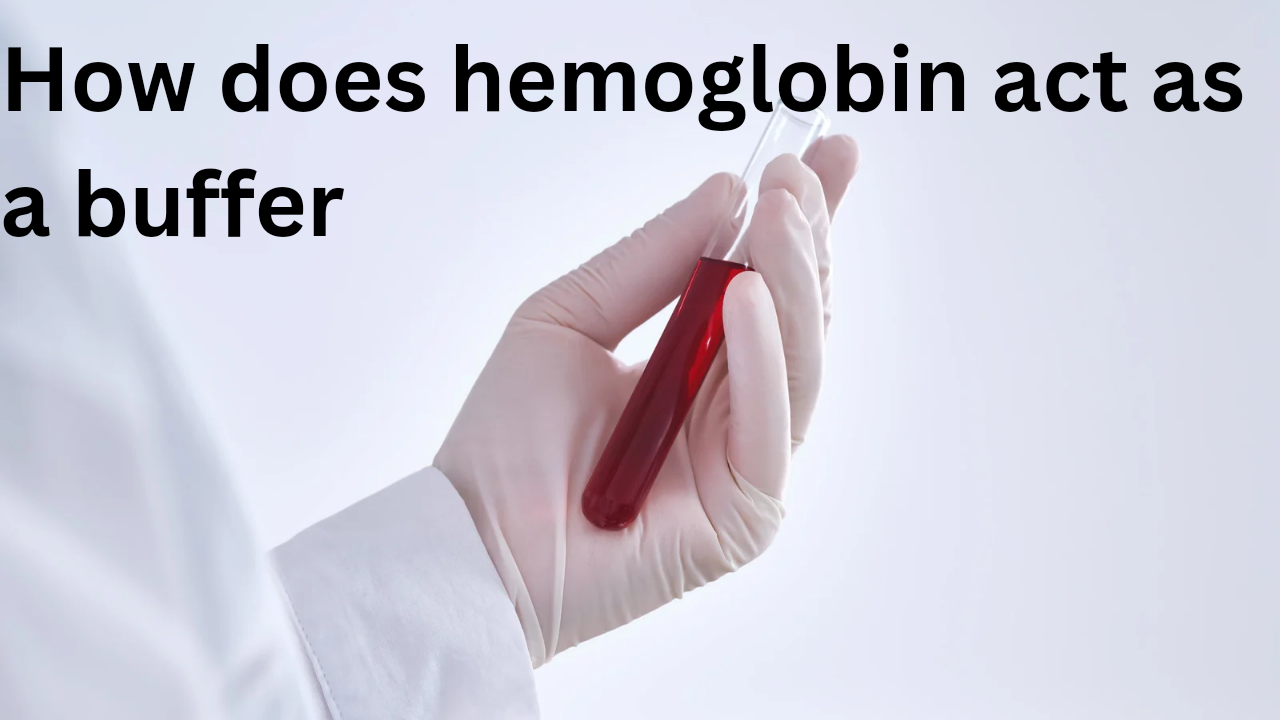Hemoglobin plays a critical role in maintaining blood pH within a narrow range, acting as an effective buffer system. Blood pH is tightly regulated around 7.35–7.45, and even small deviations can impair cellular functions.
Its buffering capacity is due to its ability to bind to hydrogen ions (H⁺) and carbon dioxide (CO₂), both of which can affect pH levels.
Here’s how hemoglobin functions as a buffer:
- Hemoglobin contains amino acid residues, such as histidine, that can bind to H⁺ ions. This occurs when blood pH begins to drop (becomes more acidic).
- When hemoglobin releases oxygen in tissues, it becomes deoxygenated hemoglobin (HHb), which has a higher affinity for H⁺ ions. This process helps prevent a large drop in
Buffering Through Hydrogen Ion Binding
Hemoglobin is a protein found in red blood cells contains histidine amino acid, that have ionizable groups capable of binding H⁺ ions.
In the tissues, where cellular metabolism generates CO₂, this gas diffuses into red blood cells and reacts with water, catalyzed by the enzyme carbonic anhydrase, to form carbonic acid (H₂CO₃).
Carbonic acid then dissociates into bicarbonate ions (HCO₃⁻) and H⁺ ions. The increase in H⁺ ions could lower blood pH, but hemoglobin counteracts this by binding to the free H⁺ ions.
When oxygen is released to tissues .Deoxygenated from has a higher affinity for H⁺ ions. The bound H⁺ ions are thus buffered, preventing significant changes in blood acidity.
This process is part of the Bohr effect, which describes how the binding of H⁺ and CO₂ to hemoglobin decreases its affinity for oxygen, facilitating oxygen delivery where it is needed most.
Role in Carbon Dioxide Transport
Hemoglobin also buffers pH by binding CO₂. About 20–30% of the CO₂ produced by tissues is transported in the blood bound to hemoglobin as carbaminohemoglobin.
When CO₂ binds to the amino groups of hemoglobin, it forms carbamino compounds, releasing H⁺ ions in the process. However, these ions are also buffered by hemoglobin’s histidine residues.
However, the majority of CO₂ is transported as bicarbonate in plasma. The exchange of bicarbonate and chloride ions across the red blood cell membrane (the chloride shift) helps maintain electrical neutrality, while hemoglobin buffers the associated H⁺ ions. This coordinated system ensures efficient CO₂ transport while minimizing pH changes.
Buffering in the Lungs
In the lungs, the buffering process is reversed. Oxygen binds to hemoglobin, which releases H⁺ ions. These ions combine with bicarbonate to reform carbonic acid, which is then converted back into CO₂ and water by carbonic anhydrase.
The CO₂ is exhaled, reducing the acid load in the blood and restoring pH balance.
